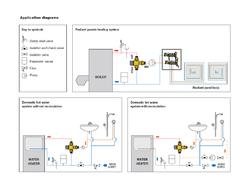I know after reading the title your guys' butts are already puckering but hear me out. 
What I would like to do is hook up a sidearm to my electric hot water heater and not hook up a tempering valve so as to not have to redo the near plumbing. My idea in order to keep the installation safe is use a zone valve on the sidearm and set the temperature on the zone to 125° (another temp sensor on my Arduino based control system).
Can you guys think of any problems with a solution like this?

What I would like to do is hook up a sidearm to my electric hot water heater and not hook up a tempering valve so as to not have to redo the near plumbing. My idea in order to keep the installation safe is use a zone valve on the sidearm and set the temperature on the zone to 125° (another temp sensor on my Arduino based control system).
Can you guys think of any problems with a solution like this?


